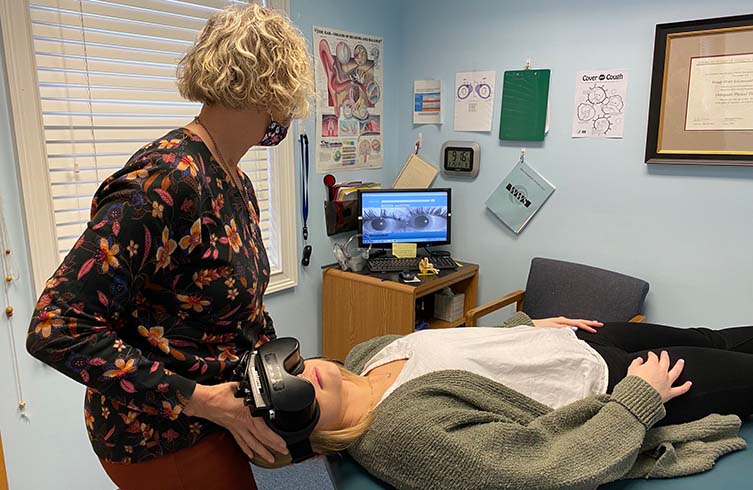BPPV is A disorder of the inner ear that is the most common cause of episodic Vertigo, a false sensation of spinning. It is a mechanical disorder where calcium carbonate crystals (otoconia), that are normally embedded in gel substance in the utricle of the inner ear , become dislodged and migrate into one of the three fluid filled semicircular Canal’s. Since these fluid filled canals are designed to sense rotational movement ,the crystals which react to gravitational pull or pull of gravity , cause the nerve endings in the canal to be more excited than normal , resulting in a mismatch of information to the brain creating Nystagmus of the eyes, which create a false sense that the room is spinning.
The most common symptom is a spinning sensation of vertigo but often patients have complained of feeling like they’re falling even when they’re laying down or describe feeling of walking like they are drunk. Vertigo events frequently occur in the morning when you sit up or turn over in bed but often can also be associated with quick turns of the head or bending over to pick something up. These episodes can last seconds or minutes and are commonly associated with nausea vomiting and dizziness as well as imbalance.The level of symptoms can range from mild annoyance to a highly debilitating condition that can affect function and safety and fall risk.
There are several types of BPPV including canalithiasis and cupulolithiasis which need to be recognized because they are treated differently. BPPV can occur in each of the three canals in the right and left ear therefore a proper examination is necessary to allow correct treatment with the patient having minimal symptoms. Other disorders may be misdiagnosed as BPPV or patients are given incorrect diagnosis of a more serious condition instead of BPPV.
BPPV is a very common disorder with an incidence of 107 per 100,000/year . it is common in senior adults and appears to increase incidences with each decade of life. It can also be associated with trauma, concussion ,migraine inner ear infections or disorders,diabetes and osteoporosis.
Treatment
Treatment of BPPV follows a detailed physical exam by the vestibular rehabilitation specialist. Since it is a mechanical disorder ,there are treatment maneuvers which differ depending on which canal or type that is involved, these maneuvers assist the otoconia to float back to their origin in the utricle. The most well-known maneuver is called the Epley maneuver but there are many different maneuvers for specific variants of BPPV. The treatment procedure involves tilting the head at several different angles and rolling the body to dump the crystals back into the utricle.(see figure) A Skilled vestibular therapist can resolve BPPV with two to three maneuvers in the first session. Often abnormal balance reactions result from BPPV And they need to be assessed further once the vertigo is effectively treated. it is important to treat both BPPV and the imbalance to prevent future falls.
Examination.

A proper examination involves an assessment of the eyes for normal movement patterns in room light and assessment of static balance examination then using Frenzel lenses ,special tests that involve positional changes are performed. The most common test is called the Dix-Hallpike test where the patient is laid down with her head turned 45° to one side allowing the head to hang off the edge of the table. Frenzel lenses ,which are infrared goggles that assist the vestibular therapist in observing nystagmus , are used during the exam to assist with accuracy of diagnosis.
it is common after treatment for the patient to feel mildly dizzy and sometimes nauseous but generally this improves in less than 24 hours. There are some cases that takes several treatments to resolve or patients need several further treatments to return their balance reactions to normal to prevent falls.
Unfortunately BPPV is a condition that commonly reoccurs periodically with rates as high as 50% within five years. We will educate you about how to perform a specific treatment maneuver on your self and if this does not appear to be effective then we you can follow up in the office for further assessment.
All of the therapists at Wendy Webb Schoenewald Physical Therapy and Vestibular Rehabilitation are advanced distributor therapists with extensive training in the proper treatment for BPPV and other vestibular and balance disorders. WWSPT has been involved in clinical research trials to teach other physical therapists which maneuvers are most effective in treating some unusual forms of BPPV.
Contact WWSTP for an appointment evaluation.

Leave a Reply